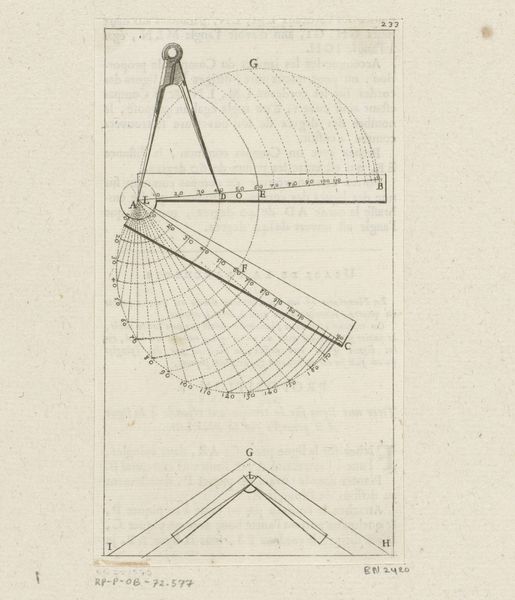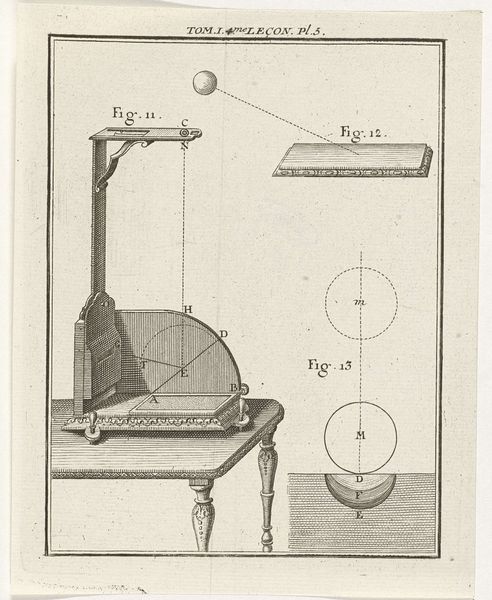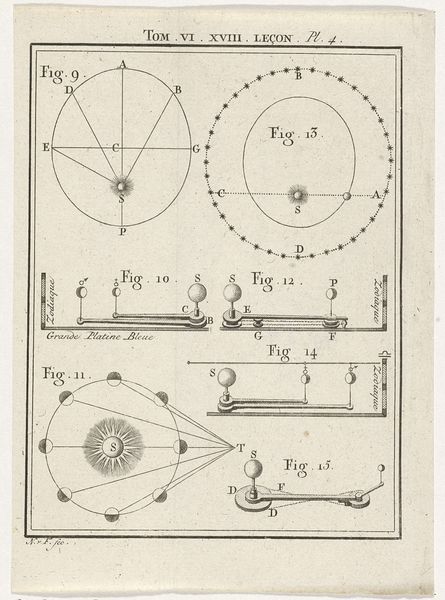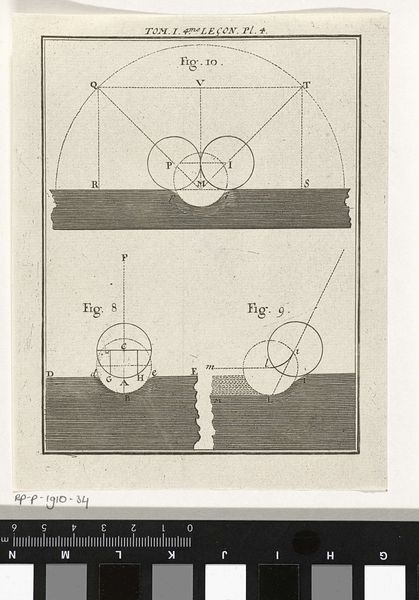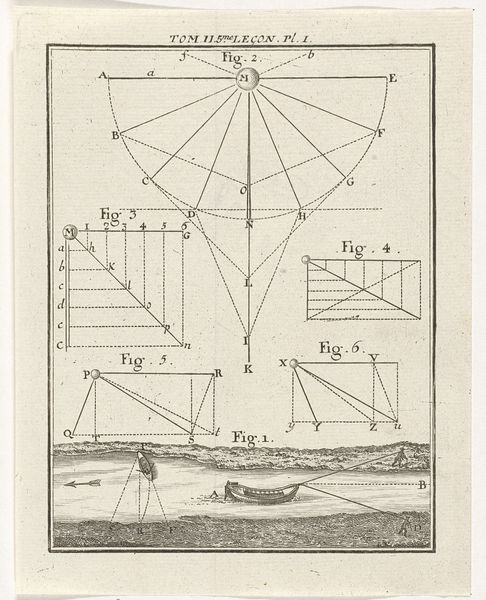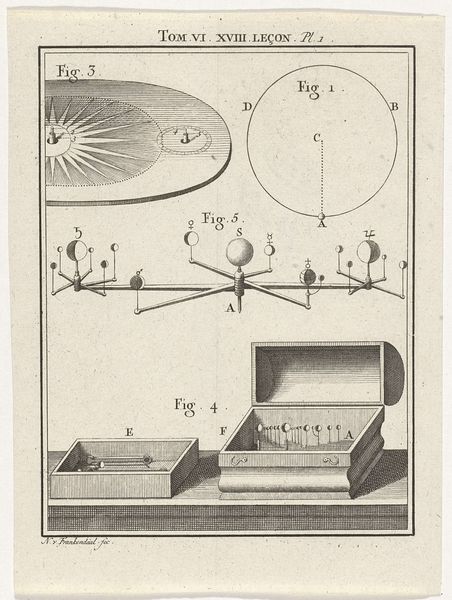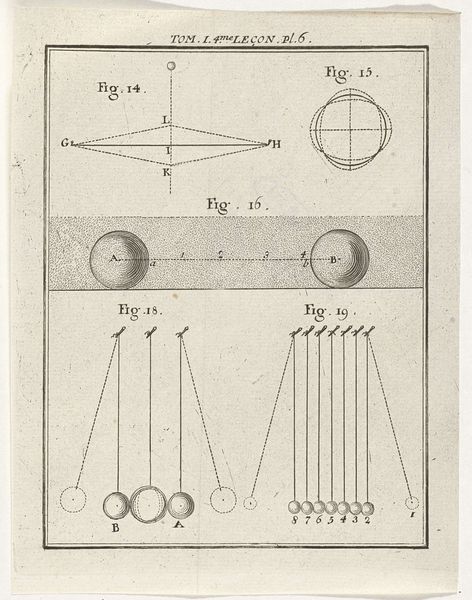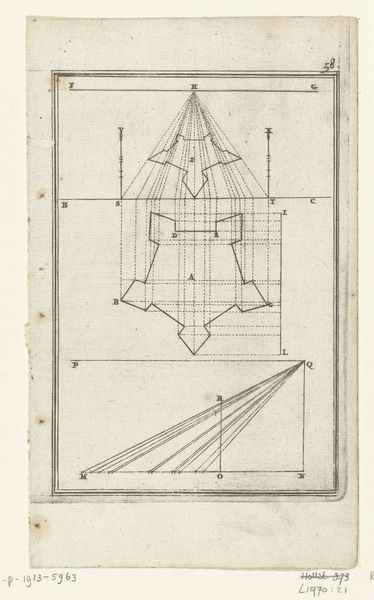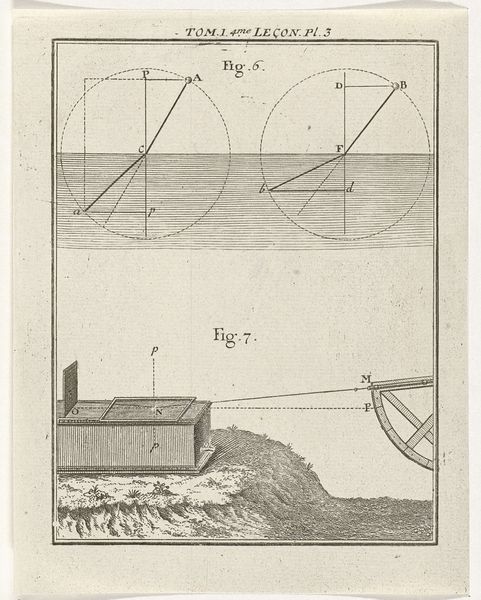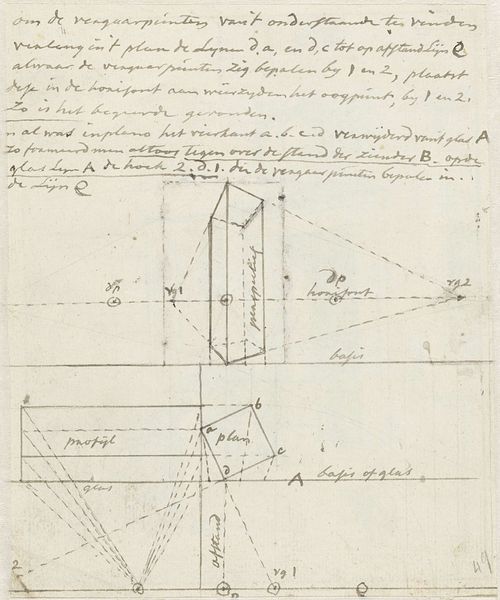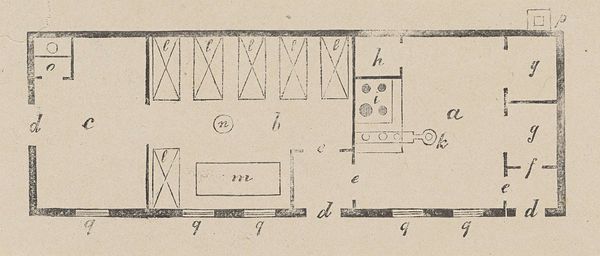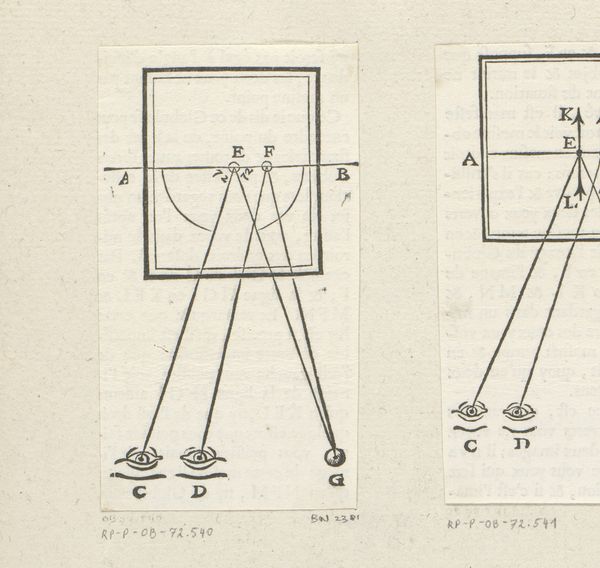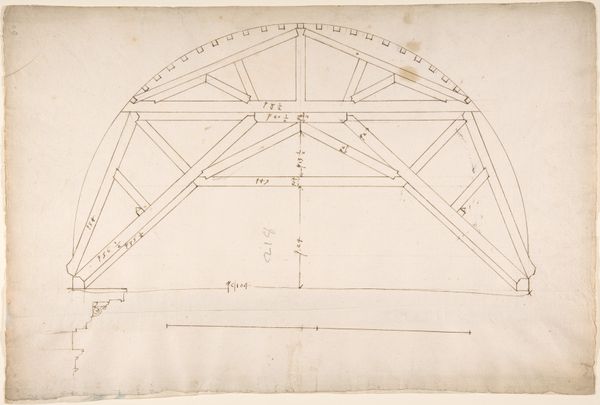
drawing, print, etching, engraving
#
drawing
# print
#
etching
#
old engraving style
#
etching
#
geometric
#
architecture drawing
#
history-painting
#
academic-art
#
engraving
Dimensions: height 163 mm, width 126 mm
Copyright: Rijks Museum: Open Domain
Editor: This print, "Natuurkundige instrumenten en modellen," or "Physical Instruments and Models," by Nicolaas van Frankendaal, created in 1759, seems to be a detailed scientific illustration. The engraving on what looks like paper depicts various diagrams and apparatuses. It feels very precise, almost cold in its exactitude. What strikes you when you look at this? Curator: The beauty here lies not just in the finished product, but in understanding the means of its production and circulation. Look at the fine lines of the etching – they speak to a craftsman's skilled labor. How was this image intended to be used? Was it meant for an exclusive audience of scholars, or did it have broader distribution, impacting scientific literacy at the time? Editor: That's a great point! I hadn’t considered the impact of the printing process itself. It feels very removed from the subject of physics. Curator: But is it, really? Consider the economic investment, the accessibility facilitated by printmaking… the dissemination of knowledge. Who owned the means of production – the presses, the materials? Examining the socio-economic context surrounding the creation and consumption of this image enriches our understanding of scientific development itself. Did the artist have freedom with what he drew? How did patronage shape his creation? Editor: So you're saying the image isn't just about scientific instruments; it's about the systems that allowed this kind of knowledge to spread. Thinking about how the print medium affected the accessibility of these diagrams helps me understand the work’s relevance in society. Curator: Precisely! By investigating the materials and mode of distribution, we can appreciate how prints like these played a vital role in shaping scientific thought and education beyond just aesthetic value. Editor: It really changes the way I see this piece now. Thanks for the perspective!
Comments
No comments
Be the first to comment and join the conversation on the ultimate creative platform.
